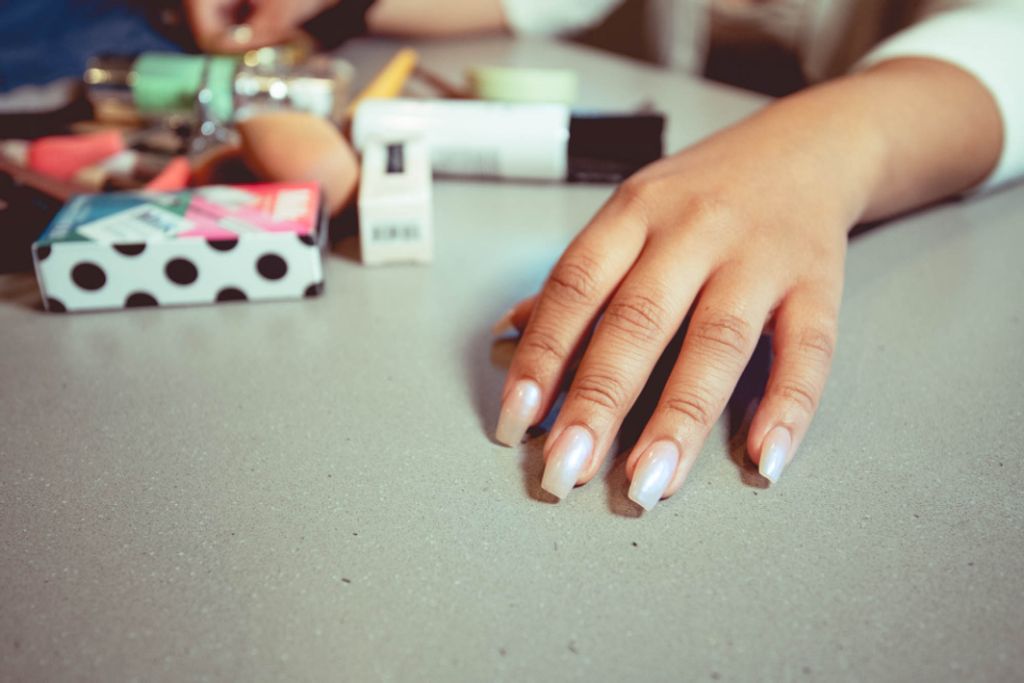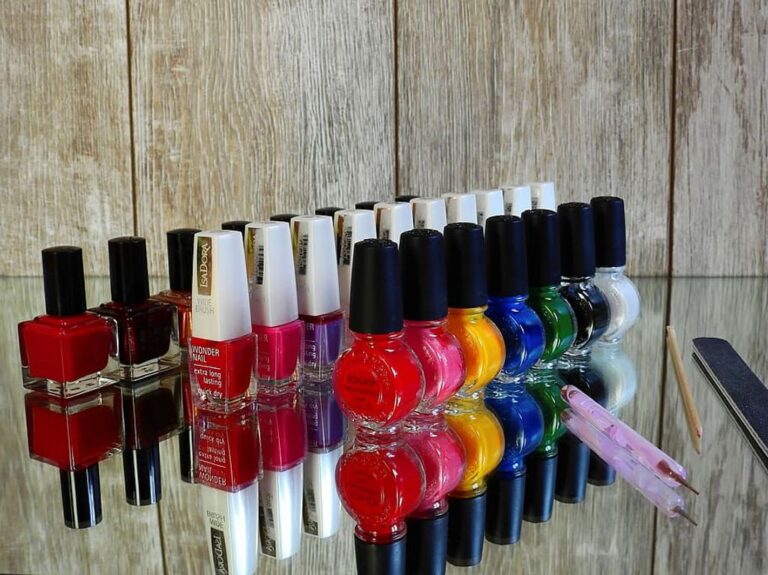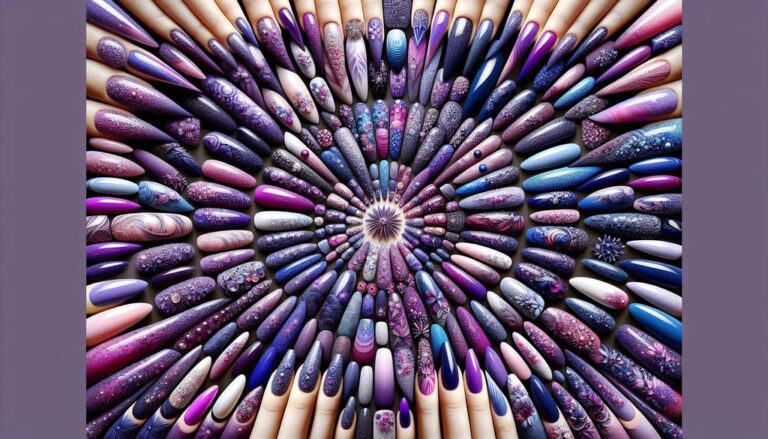“Ridge Revelations: Why Nails Have Ridges Unveiled”
This article delves into the fascinating topic of nail ridges, uncovering the science behind their formation, their potential health implications, and practical tips for managing them. By exploring the purpose of nail ridges and dispelling common myths, readers will gain a deeper understanding of this often overlooked aspect of nail health.
Key Takeaways
- Nail ridges can be influenced by genetics, aging, and certain medical conditions.
- Nail ridges can serve as indicators of underlying health issues and nutritional deficiencies.
- Regular moisturizing and proper nail care can help minimize the appearance of nail ridges.
- Consulting a healthcare professional is advisable if nail ridges are accompanied by other symptoms or changes in nail color or texture.
- Understanding the truth about nail ridges can help dispel misconceptions and alleviate unnecessary concerns.
Understanding the Purpose of Nail Ridges

The Science Behind Nail Ridges
Nail ridges are the faint lines that run up and down the nail plate, often becoming more noticeable with age. These ridges are formed by the keratinocytes, cells responsible for producing keratin, the protein that gives nails their strength and resilience. As we age, the production of keratin can slow down, leading to more prominent ridges.
Several factors contribute to the formation of nail ridges. For instance, dehydration can affect the nail’s ability to retain moisture, resulting in a ridged appearance. Additionally, long-term exposure to water or chemicals can strip the nails of their natural oils, exacerbating ridge formation.
Genetics also play a role in determining the pattern and prominence of nail ridges. Some individuals may inherit a tendency for ridged nails, which can manifest at any stage of life.
Tip: Keeping nails properly hydrated with moisturizers can help minimize the appearance of ridges and maintain nail health.
Factors Influencing Nail Ridge Formation
The formation of nail ridges is not solely a consequence of aging; various factors can influence their development. Genetics play a pivotal role, as the propensity for ridged nails can be inherited. Environmental conditions, such as exposure to harsh chemicals or extreme cold, can also exacerbate ridge formation.
Nutritional deficiencies are another significant contributor. For instance, a lack of zinc can lead to the appearance of horizontal ridges, known as Beau’s lines. Here’s a brief list of nutrients whose deficiencies might affect nail health:
- Zinc
- Iron
- Vitamin A
- Protein
Stress and illness are additional factors that can impact nail texture. It’s important to consider these elements when assessing nail health, as they can offer clues to underlying health issues.
Tip: Regularly moisturizing your hands and nails can help minimize the appearance of ridges and keep your nails strong.
Unveiling the Mysteries of Nail Health

Interpreting Nail Ridges as Health Indicators
Nail ridges, those tiny, raised lines that traverse our nails, can sometimes be more than mere cosmetic concerns. They often serve as windows to our internal health, revealing subtle clues about our body’s condition. While vertical ridges are typically associated with the natural aging process, horizontal ridages—also known as Beau’s lines—may indicate stressors such as illness or malnutrition.
It’s essential to understand that not all nail ridges are cause for alarm. However, certain patterns and changes can be indicative of underlying health issues. For instance, the appearance of new or deepening ridges, especially when accompanied by other symptoms, should prompt further investigation.
Tip: Consistent observation of your nails can be a valuable practice in monitoring your health. Sudden changes in nail texture or pattern warrant a consultation with a healthcare professional.
Here’s a simple list to help you decode what your nails might be signaling:
- Vertical ridges: Commonly associated with aging.
- Horizontal ridges (Beau’s lines): Could suggest systemic health issues.
- Nail pitting: Often seen in psoriasis or arthritis.
- Nail separation: May be a sign of infection or thyroid disease.
The Relationship Between Nail Ridges and Nutrition
Nail ridges can often provide valuable insights into an individual’s overall health, including their nutritional status. Nutrition plays a crucial role in maintaining the health and appearance of nails. Ensuring a balanced diet that includes essential vitamins and minerals is essential for preventing the development of nail ridges. Additionally, consuming adequate amounts of protein and iron can significantly contribute to the strength and resilience of nails. It’s important to note that a deficiency in certain nutrients, such as zinc and vitamin C, can manifest as nail ridges, indicating the need for dietary adjustments.
- Adequate intake of vitamins and minerals is essential for preventing nail ridges.
- Consuming protein and iron contributes to nail strength and resilience.
- Deficiency in zinc and vitamin C can manifest as nail ridges.
It is advisable to consult a healthcare professional for personalized dietary recommendations to address nail ridges effectively.
Practical Tips for Managing Nail Ridges

Effective Nail Care Techniques
When it comes to effective nail care techniques, moisturizing is key. Keeping your nails and cuticles well-hydrated can help prevent ridges and maintain overall nail health. Additionally, regular filing and gentle buffing can smooth out minor ridges, promoting a smoother nail surface. Remember to use a gentle touch and avoid excessive filing to prevent damage to the nails. Lastly, consider using a strengthening nail polish or treatment to fortify the nails and minimize the appearance of ridges.
Seeking Professional Advice for Nail Ridges
While at-home care can be effective for managing minor nail ridges, certain conditions warrant professional evaluation. If you observe persistent or worsening nail ridges, especially those that are horizontal or paired with other symptoms like hair loss, it’s imperative to consult a healthcare provider. These could be harbingers of more serious health issues.
Professionals can offer a range of diagnostic tools and treatments that are not available over the counter. For instance, blood tests can reveal nutritional deficiencies, while a dermatologist might prescribe specialized creams or ointments. Here’s a simple guide on when to seek professional advice:
- Persistent ridges that do not improve with home care
- Ridges accompanied by other symptoms, such as hair loss or skin changes
- Sudden onset of multiple horizontal ridges
- Nail changes following new medication or health changes
Remember, your nails are a reflection of your overall health. Early intervention can be crucial in addressing the root cause of nail ridges and maintaining both nail and systemic well-being.
Dispelling Myths About Nail Ridges

Debunking Common Misconceptions
Nail ridges are often associated with various misconceptions and myths. It’s important to debunk these common misconceptions to understand the true nature of nail ridges. One common myth is that nail ridges are always a sign of poor health. However, it’s essential to recognize that not all nail ridges indicate health issues. In fact, some nail ridges are simply a natural part of the aging process. Another misconception is that nail ridges can be permanently removed through external treatments. While certain nail care techniques can improve the appearance of ridges, it’s important to note that nail ridges are often a result of internal factors and may not be completely eliminated. It’s crucial to consult a professional for personalized advice on managing nail ridges. Remember, understanding the truth about nail ridges is key to proper nail care and maintenance.
Understanding the Truth About Nail Ridges
The truth about nail ridges lies in their normalcy and the fact that they are rarely a cause for alarm. While nail ridges can be a sign of underlying health issues, they are often simply a part of the natural aging process or a reflection of the body’s response to environmental factors.
Myths persist that nail ridges are indicative of serious health problems, but it’s important to approach this topic with a nuanced understanding. For instance, vertical ridges are typically harmless and may become more pronounced with age. On the other hand, horizontal ridges, known as Beau’s lines, can sometimes signal stress to the nail matrix due to illness or injury.
Remember: Not all nail ridges require medical intervention, but persistent changes in your nails should be evaluated by a healthcare professional.
To discern the truth about your own nail health, consider these points:
- Vertical ridges are common and usually benign.
- Horizontal ridges may warrant a closer look by a doctor.
- Sudden changes in nail texture or color should not be ignored.
- Consistent nail care can help manage the appearance of ridges.
Are you worried about those pesky nail ridges? Don’t be! Let’s debunk the myths and learn the truth about nail ridges. At NAILinspire.com, we believe in empowering you with the knowledge to take care of your nails. Visit our website to discover the ultimate online nail art design library and say goodbye to nail ridges for good!
Frequently Asked Questions
What causes nail ridges?
Nail ridges can be caused by a variety of factors, including aging, nutritional deficiencies, trauma, and underlying health conditions.
Are nail ridges a sign of poor health?
Nail ridges can sometimes indicate underlying health issues, but they can also be a natural part of the aging process. It’s important to monitor other symptoms and consult a healthcare professional if concerned.
Can nail ridges be treated?
Treatment for nail ridges depends on the underlying cause. In some cases, improving nutrition, maintaining proper nail care, and addressing any health conditions can help reduce the appearance of nail ridges.
Do nail ridges affect nail strength?
Nail ridges may make nails more prone to splitting and breaking, but proper nail care and maintenance can help improve overall nail strength.
Are there any home remedies for nail ridges?
Some individuals find that using moisturizing nail treatments, massaging cuticle oil into the nail bed, and maintaining a balanced diet can help improve the appearance of nail ridges.
Should I be concerned about vertical or horizontal nail ridges?
Vertical nail ridges are often a normal part of aging, while horizontal ridges may indicate more serious health issues. It’s important to monitor the direction and appearance of nail ridges and seek medical advice if concerned.






